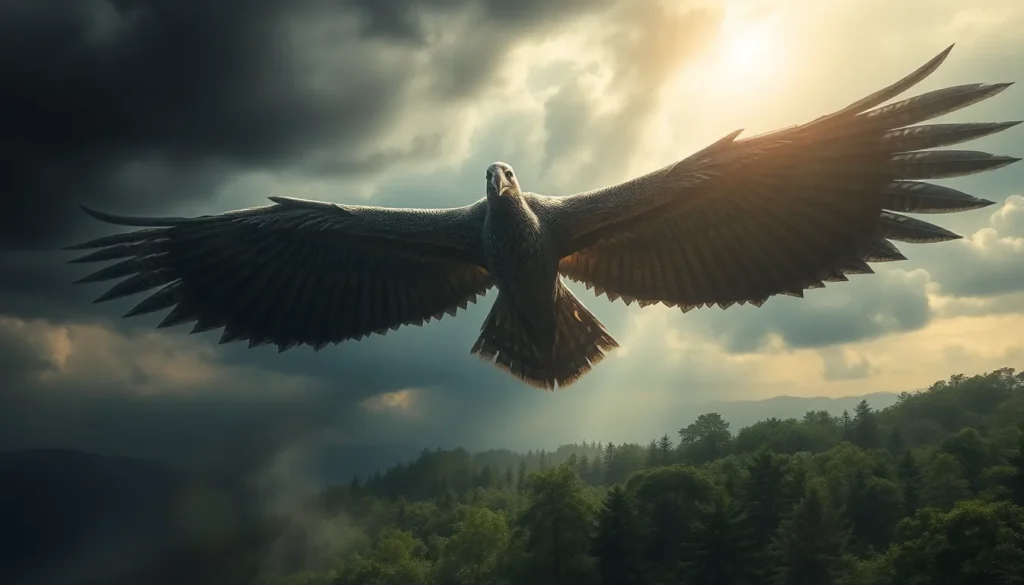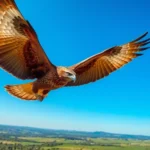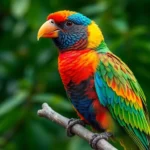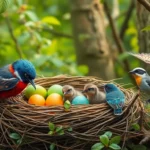We’ve all heard spine-chilling tales of mysterious creatures soaring through moonlit skies, but bird monsters represent some of the most fascinating and terrifying cryptids in folklore worldwide. These winged beasts blend the natural grace of avian flight with supernatural power that’s captivated human imagination for centuries.
From the thunderous Thunderbird of Native American legend to the bloodthirsty Jersey Devil haunting New Jersey’s Pine Barrens, bird monsters embody our deepest fears about what lurks in the darkness above. These creatures don’t just fly—they dominate the skies with razor-sharp talons, piercing screams, and wingspans that eclipse the sun.
What Are Bird Monsters?
Bird monsters represent mythological creatures that combine avian characteristics with supernatural abilities and terrifying features. These legendary beings appear across cultures worldwide as winged entities possessing immense power beyond ordinary birds.
Most bird monsters display enlarged proportions compared to their natural counterparts. Examples include the Roc from Arabian mythology, which carries off elephants in its talons, and the Phoenix, which regenerates through flames. These creatures typically measure between 15 to 200 feet in wingspan according to various folklore accounts.
Common Bird Monster Characteristics:
| Feature | Description | Examples |
|---|---|---|
| Size | 10-50x larger than natural birds | Thunderbird, Roc |
| Powers | Elemental control or magical abilities | Phoenix (fire), Thunderbird (lightning) |
| Habitat | Remote locations or supernatural realms | Mountain peaks, storm clouds |
| Behavior | Territorial and often hostile to humans | Jersey Devil, Harpy |
Physical attributes distinguish bird monsters from regular wildlife through exaggerated features like razor-sharp talons, metallic feathers, or glowing eyes. The Simurgh from Persian mythology displays peacock-like plumage while possessing healing powers through its feathers.
Cultural interpretations vary significantly across regions. Native American traditions describe the Thunderbird as a protector spirit, while European folklore often portrays bird monsters as omens of doom or death. The Banshee’s bird form in Irish mythology serves as a harbinger of tragedy for exact families.
Documentation of bird monster sightings spans thousands of years across continents. Ancient Egyptian texts reference the Bennu bird, while medieval European manuscripts detail encounters with griffins and harpies. Modern cryptozoology continues investigating reported sightings of creatures like Mothman and the Ahool.
These supernatural beings occupy unique positions in their respective mythologies as guardians, destroyers, or messengers between earthly and divine realms. Their bird monster nature allows them to traverse boundaries that ground-based creatures cannot cross.
Origins and Mythology of Bird Monsters
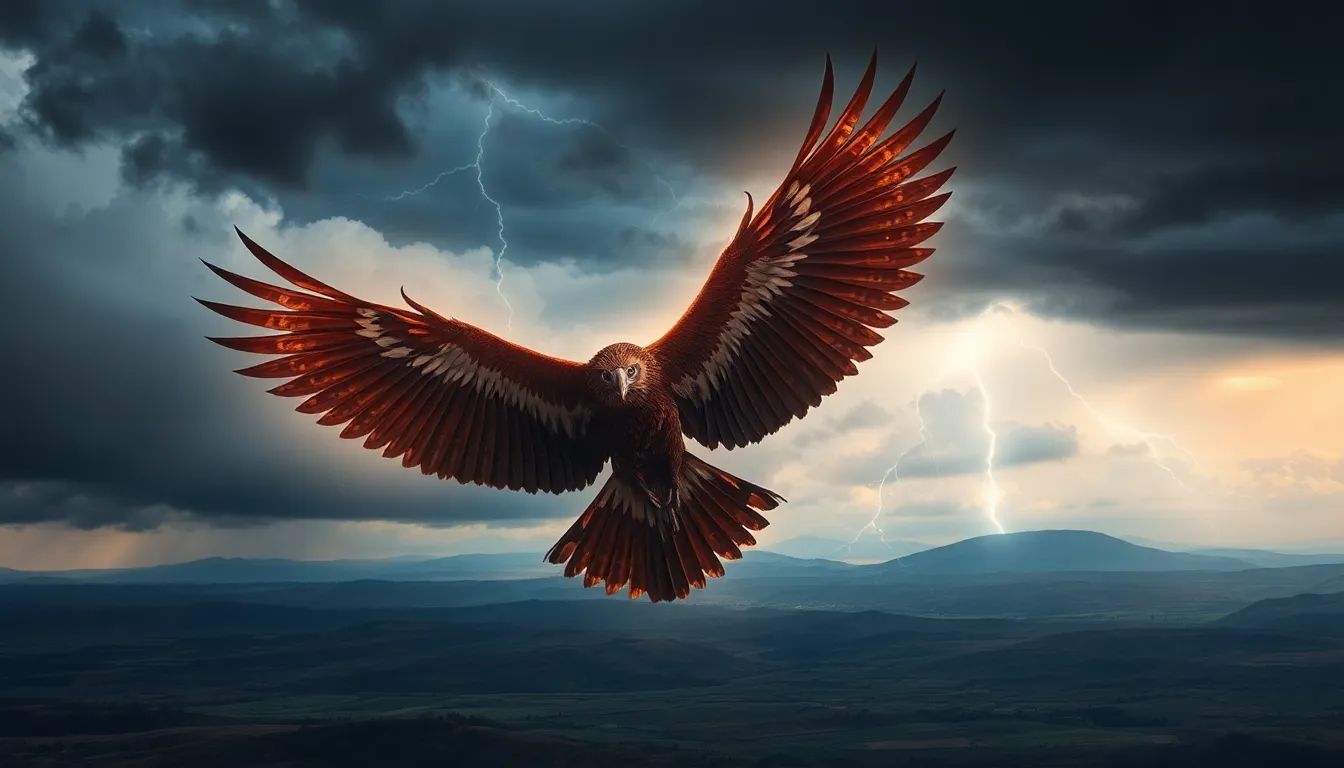
Bird monster mythology emerges from humanity’s earliest attempts to explain natural phenomena and divine intervention through winged supernatural beings. These creatures represent the intersection between earthly existence and celestial power across diverse cultural traditions.
Ancient Civilizations and Bird Deities
Ancient Egyptian civilization established foundational bird monster archetypes through deities like Horus, depicted with a falcon head and human body wielding control over sky and kingship. Egyptian texts from 3100 BCE describe the Bennu bird, a predecessor to the Phoenix myth, rising from sacred flames in Heliopolis temples.
Mesopotamian cultures documented the Anzu bird around 2334 BCE, a massive eagle creature capable of stealing divine tablets and controlling storms. Babylonian mythology presents this bird monster as both creator and destroyer, establishing patterns that influenced later civilizations.
Greek mythology transformed bird monsters into punishment mechanisms through creatures like the Harpies, winged women with sharp talons who tormented mortals on Zeus’s command. The Stymphalian Birds, bronze-beaked creatures from Hercules’s sixth labor, demonstrate how ancient Greeks used bird monsters to represent unconquerable natural forces.
Norse tradition contributed the giant eagles Hræsvelgr and Veðrfölnir, positioned at the industry tree Yggdrasil’s extremes. These massive birds generated winds through their wingbeats, connecting bird monsters directly to weather control and cosmic order.
Folklore Across Different Cultures
Native American tribes across North America developed the Thunderbird concept independently, creating variations that span from Pacific Northwest totem poles to Plains tribe sacred ceremonies. The Lakota describe Wakinyan Oyate as massive birds creating thunder through wingbeats and lightning through eye movements.
Asian folklore presents bird monsters through Japan’s Tengu, crow or eagle beings possessing martial arts mastery and supernatural wisdom. Chinese mythology contributes the Peng, a bird so enormous it blocks sunlight during flight, influencing weather patterns across entire provinces.
European traditions evolved bird monster concepts through medieval bestiaries, documenting creatures like the Roc from Arabian Nights, capable of lifting elephants in its talons. Germanic folklore presents the Greif, a griffin combining eagle and lion attributes, guarding treasure and divine knowledge.
South American indigenous cultures describe the Piasa, a bird monster large enough to carry away full-grown warriors. Aztec mythology includes Quetzalcoatl’s feathered serpent form, blending bird and reptilian characteristics into a single divine entity.
African traditions contribute the Impundulu or Lightning Bird, controlling storms and serving as familiars to powerful shamans. This creature appears in South African folklore as both protector and destroyer, depending on its summoner’s intentions.
Aboriginal Australian Dreamtime stories feature the Yara-ma-yha-who, a small red bird creature with suckers instead of claws, representing the dangerous aspects of seemingly innocent natural forms.
Popular Bird Monsters in Media and Entertainment
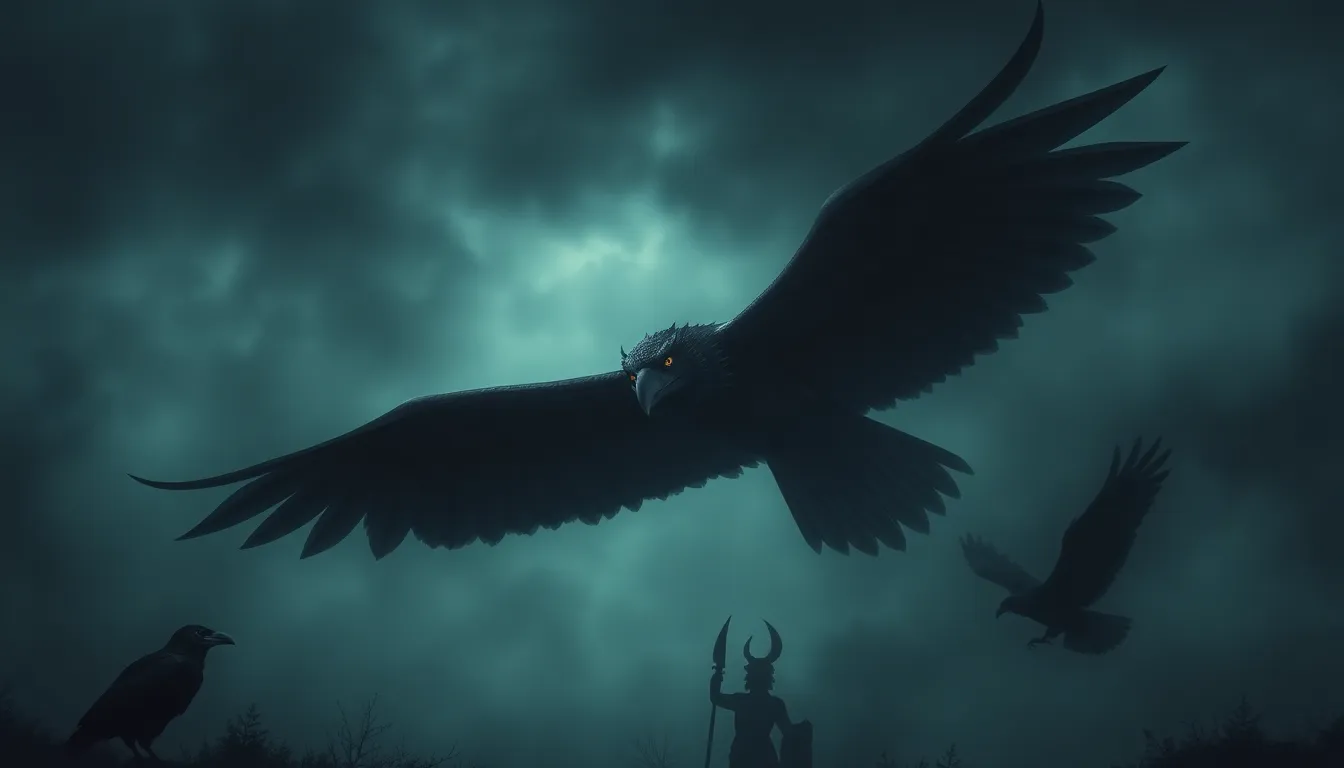
Media and entertainment industries have transformed ancient bird monster legends into compelling narratives that captivate modern audiences. These mythological creatures continue evolving through various storytelling mediums, adapting traditional folklore elements for contemporary consumption.
Classic Literature and Poetry
Classic literature established bird monsters as powerful literary devices representing divine intervention and natural forces. Edgar Allan Poe’s “The Raven” (1845) transformed the common raven into a supernatural harbinger of doom, while Alfred Lord Tennyson’s “The Eagle” portrayed avian majesty with ominous undertones. Victorian poets frequently incorporated harpy imagery to symbolize destructive feminine power, drawing directly from Greek mythology.
Romantic literature embraced the Phoenix archetype as a symbol of renewal and transcendence. Samuel Taylor Coleridge’s “The Rime of the Ancient Mariner” featured the albatross as a spiritual guardian turned curse, demonstrating how bird monsters function as moral catalysts. Gothic novels of the 19th century often included giant ravens and supernatural owls as omens preceding tragic events.
Epic poetry traditions worldwide celebrated massive birds of prey as divine messengers. The Persian epic “Shahnameh” featured the Simurgh, a benevolent bird monster with healing powers. Norse sagas described eagles perched atop Yggdrasil, the industry tree, serving as intermediaries between earthly and cosmic realms.
Modern Movies and Television
Contemporary cinema has reimagined bird monsters through advanced visual effects and psychological horror elements. Alfred Hitchcock’s “The Birds” (1963) revolutionized the genre by transforming ordinary birds into coordinated attackers, creating primal fear without supernatural explanation. Monster movies like “Rodan” (1956) introduced pterodactyl-inspired creatures capable of mass destruction.
Television series have explored bird monster themes across multiple genres. “Supernatural” featured various winged entities including angels with devastating wing displays and vengeful spirits manifesting as corvids. Horror anthology shows regularly incorporate owl-based creatures as nocturnal predators stalking human prey.
Fantasy productions embraced majestic bird monsters as aerial mounts and guardians. “Game of Thrones” popularized dragons as intelligent flying predators, while “The Lord of the Rings” trilogy showcased giant eagles as divine intervention forces. Animated films like “How to Train Your Dragon” transformed bird monsters into sympathetic companions rather than antagonistic forces.
Video Games and Comics
Video games have elevated bird monsters into interactive boss battles and companion creatures across multiple gaming platforms. “The Legend of Zelda” series features recurring phoenix-like bosses requiring strategic combat approaches. “Monster Hunter” games present detailed ecosystems where players track and battle massive bird wyverns with unique behavioral patterns.
Comic book universes regularly incorporate bird monster antagonists as supernatural threats. Marvel Comics features characters like the Vulture, combining human intelligence with predatory bird characteristics. DC Comics has explored themes through characters like Hawkman, blending ancient Egyptian bird deity mythology with modern superhero narratives.
Role-playing games extensively catalog bird monster varieties as both enemies and allies. “Dungeons & Dragons” includes detailed statistics for creatures like the Aarakocra and giant eagles, providing mechanical frameworks for supernatural bird encounters. “Final Fantasy” series consistently features Chocobo companions alongside more threatening bird-based summons.
| Media Type | Notable Examples | Cultural Impact |
|---|---|---|
| Literature | The Raven, Shahnameh | Symbolic representation |
| Cinema | The Birds, Rodan | Visual spectacle |
| Television | Supernatural, Game of Thrones | Ongoing narratives |
| Video Games | Zelda series, Monster Hunter | Interactive engagement |
| Comics | Marvel’s Vulture, Hawkman | Serialized storytelling |
Physical Characteristics and Abilities
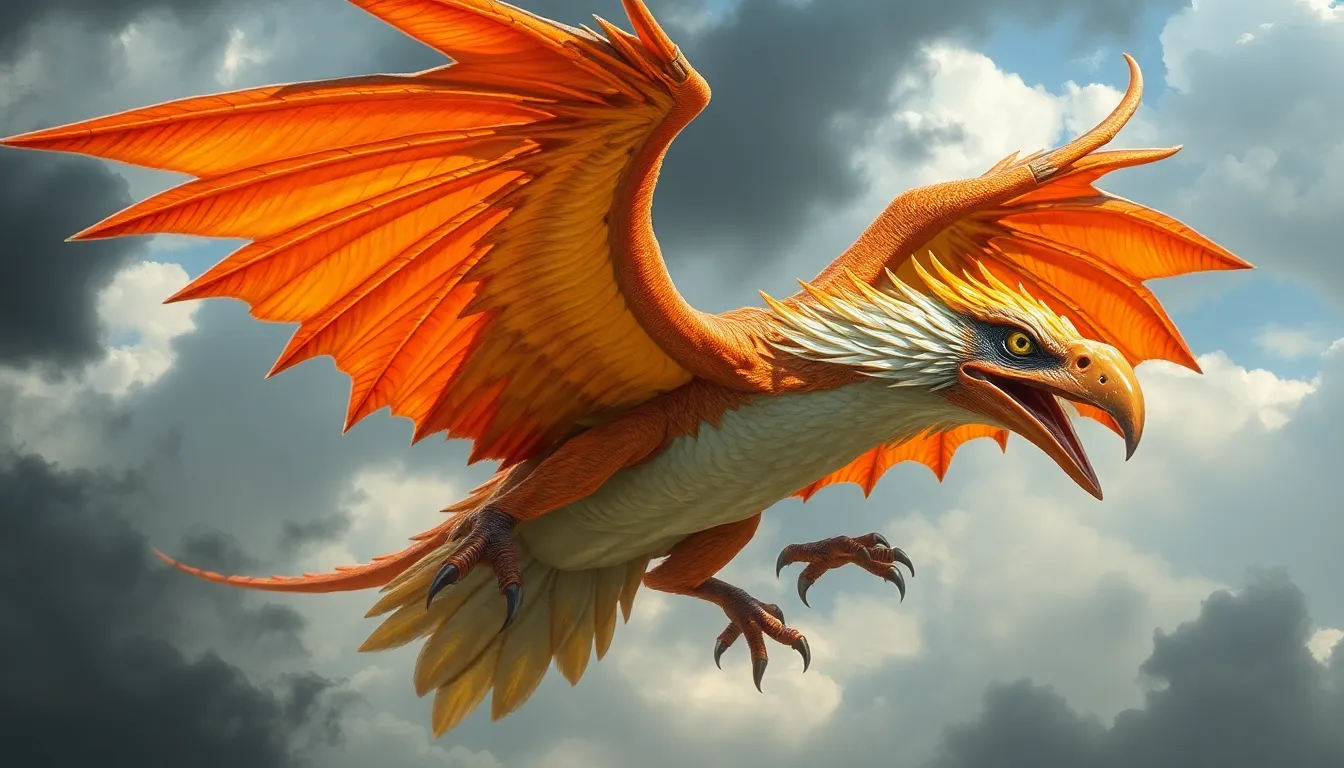
Bird monsters possess distinctive anatomical features that set them apart from ordinary avian species. These legendary creatures combine natural bird characteristics with supernatural enhancements that make them formidable beings in folklore worldwide.
Common Features of Bird Monsters
Massive wingspans represent the most striking characteristic of bird monsters across cultures. The Roc from Arabian mythology displays wings spanning 200 feet, while the Thunderbird possesses wings that create storm clouds when flapping. Most bird monsters measure 3 to 10 times larger than their natural counterparts, with body lengths reaching up to 50 feet in documented folklore accounts.
Enhanced talons serve as primary weapons for these creatures. Bird monsters typically feature razor sharp claws measuring 2 to 4 feet in length, capable of crushing stone and metal according to mythological descriptions. The Harpy’s talons can shred through armor, while the Stymphalian Birds possess bronze tipped claws that pierce shields.
Supernatural plumage distinguishes bird monsters from regular birds through unique coloration and properties. The Phoenix displays feathers that burn without being consumed, creating perpetual flames around its body. Tengu possess black or dark blue feathers that shimmer with otherworldly energy, while the Thunderbird’s plumage crackles with electrical discharge during flight.
Penetrating eyes grant bird monsters enhanced vision beyond normal avian capabilities. These creatures can see across vast distances, peer through illusions, and detect hidden objects or beings. The Eagle of Zeus possesses eyes that can spot targets from 100 miles away, while the Anzu bird’s gaze can paralyze mortals with fear.
Reinforced beaks function as both weapons and tools for bird monsters. The Griffin’s beak combines eagle sharpness with enhanced strength, allowing it to tear through metal armor. The Simurgh possesses a crystalline beak that can shatter mountains, demonstrating the supernatural enhancement of natural bird features.
Supernatural Powers and Abilities
Elemental manipulation represents the most common supernatural ability among bird monsters. The Thunderbird controls lightning, thunder, and storm systems across vast territories, creating weather patterns that affect entire regions. The Phoenix commands fire elements, generating temperatures exceeding 2000 degrees Fahrenheit and creating infernos that span miles. Wind control allows creatures like the Norse eagle Hræsvelgr to generate hurricanes by beating its wings, affecting weather patterns across continents.
Regenerative abilities distinguish certain bird monsters from mortal creatures. The Phoenix demonstrates complete cellular regeneration through its cyclical death and rebirth process, emerging renewed every 500 to 1000 years. The Bennu bird possesses similar resurrection capabilities, representing eternal life cycles in Egyptian mythology. These regenerative powers extend to healing severe injuries within hours rather than weeks.
Dimensional travel enables bird monsters to traverse multiple realms and planes of existence. The Raven of Odin travels between the nine realms of Norse cosmology, gathering information across dimensional boundaries. Tengu can phase between the physical and spiritual worlds, appearing and disappearing at will. This ability allows them to serve as messengers between divine and mortal realms.
Psychic abilities grant bird monsters mental powers beyond physical capabilities. The Harpy can induce madness through its piercing cries, affecting human minds from distances up to 5 miles. The Impundulu possesses telepathic abilities, reading thoughts and implanting suggestions in human minds. These mental powers often complement their physical attributes, making them formidable opponents.
Size transformation allows certain bird monsters to alter their physical dimensions. The Chinese Peng can expand from normal bird size to creatures with 3000 mile wingspans, demonstrating complete control over their physical form. The Garuda possesses similar shapeshifting abilities, adjusting its size based on situational requirements while maintaining proportional strength and speed.
Cultural Significance and Symbolism
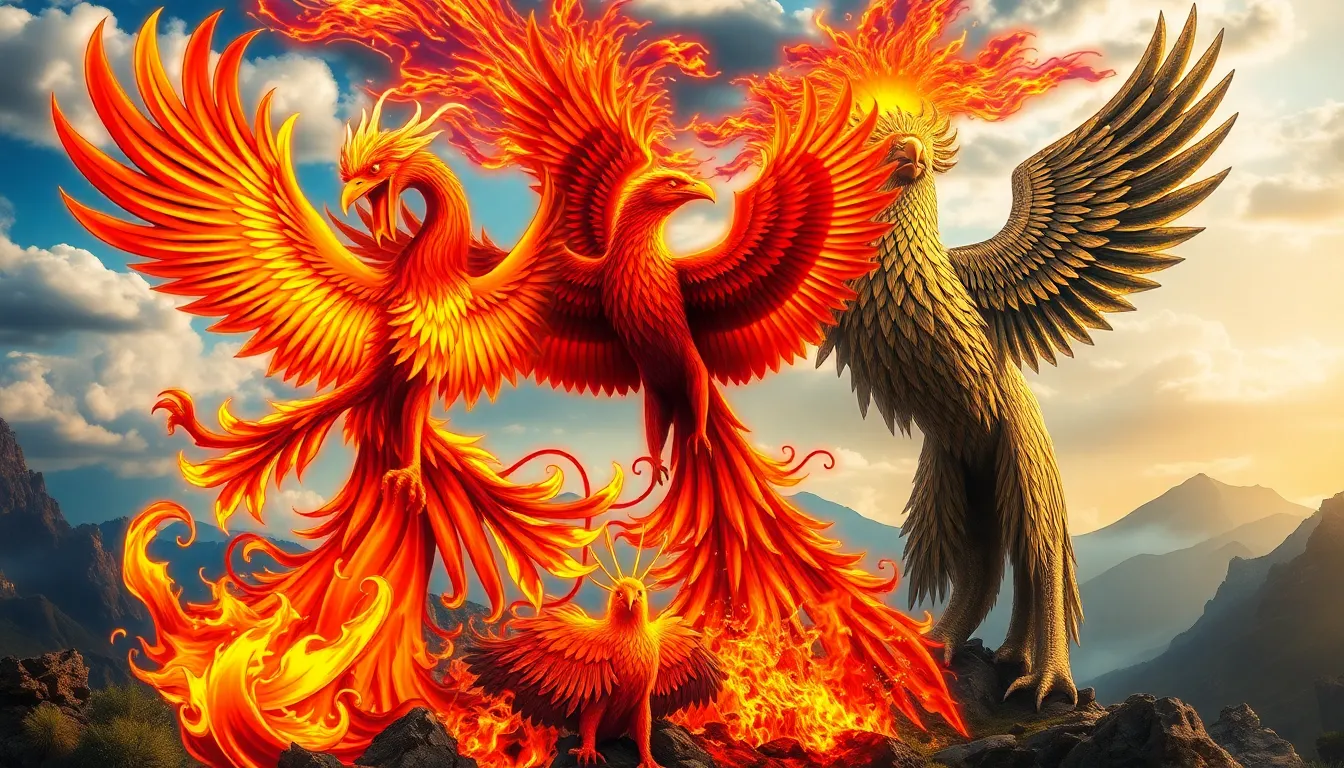
Bird monsters carry profound cultural meaning across human civilizations, representing the intersection between earthly existence and divine realms. Ancient societies viewed these creatures as mediators between mortal and celestial planes, embodying humanity’s complex relationship with the unknown forces governing their industry.
Religious traditions frequently incorporate bird monsters as symbols of divine judgment and spiritual transformation. The Phoenix represents rebirth and eternal cycles in Christianity, Buddhism, and ancient Egyptian beliefs, while the Thunderbird serves as a messenger of the Great Spirit in Native American spirituality. Islamic texts describe the Simurgh as a benevolent creature possessing divine wisdom, contrasting sharply with the destructive nature of other winged beasts.
Death and destruction emerge as dominant themes in bird monster symbolism across cultures. The Banshee’s avian connections in Celtic folklore predict impending doom, while Germanic traditions associate ravens with battlefield carnage and Odin’s omniscient surveillance. Japanese Tengu embody both protective and vengeful aspects, punishing those who disrespect sacred mountain spaces while defending Buddhist temples from intruders.
Power dynamics find expression through bird monster imagery in political and social contexts. Medieval European heraldry adopted eagle motifs to represent imperial authority, while the Garuda serves as Indonesia’s national symbol, connecting modern governance to ancient mythological strength. Chinese imperial courts used the Feng Huang (Chinese Phoenix) to represent feminine power and prosperity, balancing the masculine dragon’s dominance in royal symbolism.
Psychological interpretations reveal bird monsters as manifestations of human fears and aspirations. Carl Jung identified these creatures as archetypal symbols representing the shadow self and transcendence desires, while modern psychologists connect bird monster dreams to feelings of powerlessness and liberation fantasies. The dual nature of flight as both escape and vulnerability appears consistently across cultural interpretations.
Seasonal and agricultural significance permeates bird monster mythology in farming communities. The Quetzalcoatl’s feathered serpent form connects avian symbolism to crop cycles and weather patterns in Mesoamerican cultures, while Slavic firebirds represent the life-giving properties of sunlight during harsh winter months. Aboriginal Australian Rainbow Serpent traditions incorporate avian elements to explain seasonal flooding and drought patterns.
| Culture | Bird Monster | Primary Symbolism | Cultural Role |
|---|---|---|---|
| Egyptian | Bennu | Rebirth/Renewal | Solar deity representation |
| Greek | Harpy | Divine punishment | Executor of Zeus’s wrath |
| Norse | Jormungandr’s eagles | Cosmic order | Industry tree guardians |
| Hindu | Garuda | Divine messenger | Vishnu’s mount |
| Aztec | Quetzalcoatl | Wind/Knowledge | Feathered serpent god |
Modern interpretations expand bird monster symbolism into environmental and technological contexts. Climate change narratives adopt these creatures as metaphors for nature’s retribution against human destruction, while science fiction transforms them into symbols of genetic manipulation and artificial evolution. Urban legends continue evolving bird monster significance, reflecting contemporary anxieties about surveillance, pollution, and loss of natural habitats.
Real-World Inspirations Behind Bird Monster Legends
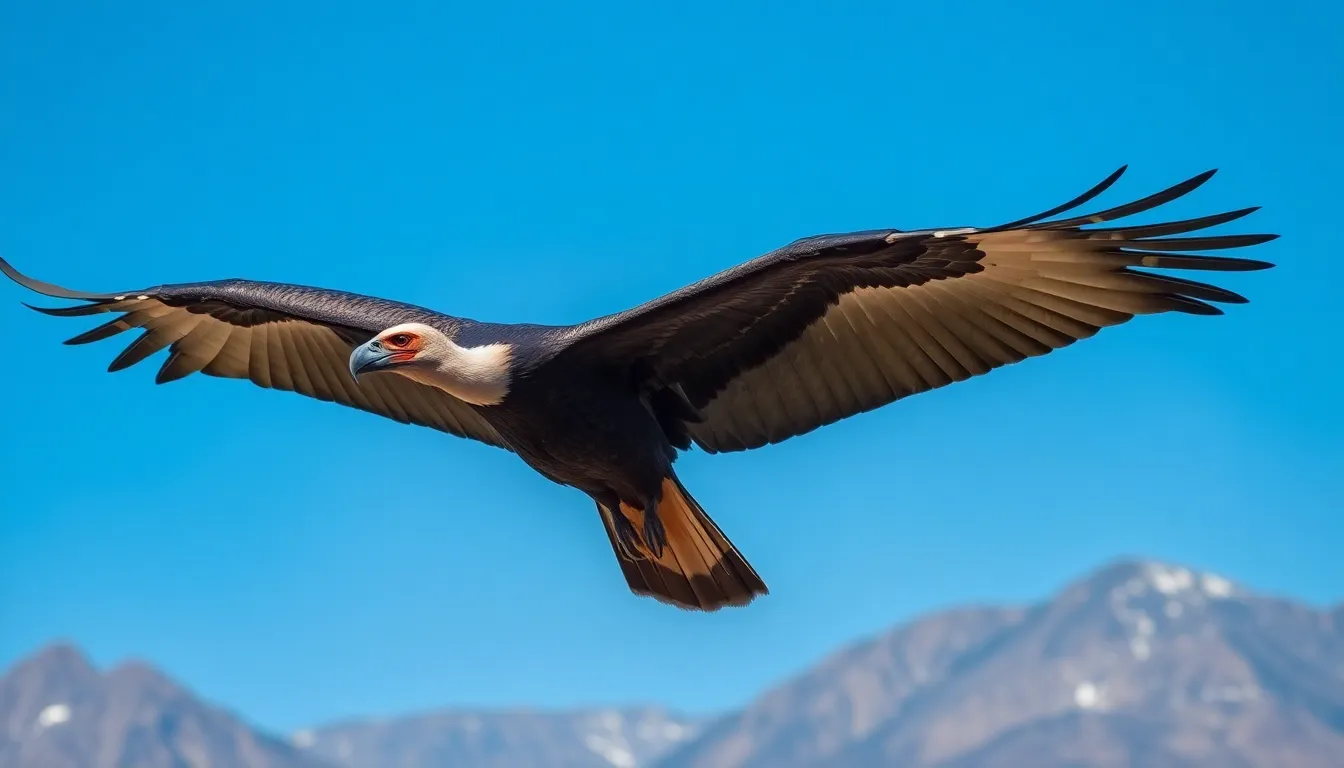
Real industry inspirations form the foundation of many bird monster legends across cultures. Natural phenomena and actual encounters with extraordinary avian species contribute to these enduring mythological narratives.
Extinct Giant Birds
Extinct giant birds provide compelling evidence for the origins of legendary creatures in folklore. The Argentavis magnificens dominated South American skies 6 million years ago with a wingspan reaching 23 feet and weighing up to 176 pounds. These massive condor relatives inspired indigenous stories of enormous flying predators that could carry off large prey.
Madagascar’s elephant birds stood 10 feet tall and weighed over 1,000 pounds before extinction around 1,000 years ago. Local Malagasy traditions describe the Vorombe titan in terms remarkably similar to documented elephant bird characteristics. Archaeological evidence supports the coexistence of these giants with early human populations.
New Zealand’s Haast’s eagle possessed the largest wingspan of any eagle at 10 feet across and hunted the giant moa birds until both species disappeared 600 years ago. Māori legends of the Pouakai describe a bird matching Haast’s eagle specifications perfectly. Fossil records confirm these eagles attacked prey weighing up to 500 pounds.
Terror birds ruled South America 15 million years ago with heights reaching 10 feet and powerful beaks capable of crushing bone. Phorusrhacidae fossils discovered throughout Argentina correlate with regional myths about giant ground dwelling predatory birds. These flightless hunters inspired cautionary tales about massive avian monsters stalking prehistoric landscapes.
Misidentified Wildlife Encounters
Misidentified wildlife encounters generate many contemporary bird monster sightings and fuel cryptozoological investigations. Large raptors like the Andean condor with 10-foot wingspans appear monstrous when spotted at close range or unusual angles. Observers frequently overestimate size and attribute supernatural characteristics to these naturally impressive birds.
Shoebill storks standing 5 feet tall with prehistoric appearance trigger bird monster reports across central Africa. Their machine gun rattling call and motionless hunting behavior create eerie encounters that locals interpret as supernatural phenomena. Tourist accounts describe these birds as “living dinosaurs” reinforcing monster narratives.
Great blue herons exhibit stalking behavior and emit harsh calls that startle nighttime observers into believing they’ve encountered cryptids. These 4-foot tall wading birds freeze in threatening postures when surprised. Darkness distorts their proportions and transforms ordinary heron encounters into legendary creature sightings.
Thunderbird sightings often result from misidentified California condors or turkey vultures caught in unusual lighting conditions. Thermal updrafts allow these large birds to soar effortlessly for hours creating the illusion of supernatural flight capabilities. Observers report wingspans exceeding natural limits due to perspective distortions and emotional excitement.
Barn owls generate many monster reports with their silent flight patterns and distinctive facial discs. Their ghostly white plumage and piercing shrieks create terrifying encounters in rural areas. Historical accounts of “white demons” and “phantom birds” frequently describe barn owl characteristics with embellished supernatural elements.
Bird Monsters in Modern Pop Culture
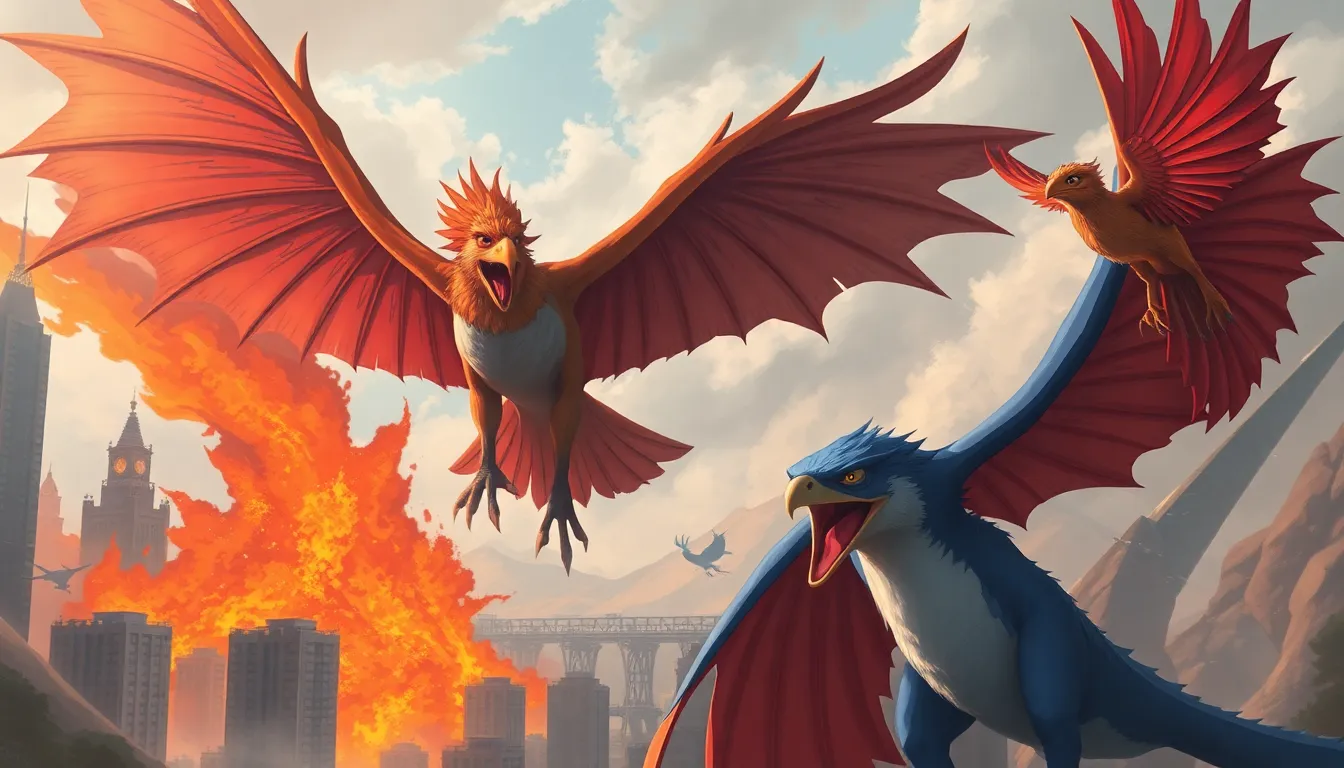
Contemporary entertainment has transformed ancient bird monster legends into cultural phenomena that captivate global audiences across multiple media platforms. We see these mythological creatures dominating film franchises, television series, video games, and digital content with unprecedented scale and sophistication.
Film and Television Adaptations
Hollywood blockbusters showcase bird monsters as central antagonists in films like “The Meg” (2018) featuring prehistoric flying creatures and “Rampage” (2018) with its genetically enhanced avian mutations. Streaming platforms deliver serialized content through shows like “The Witcher” where harpies terrorize villages and “American Gods” presenting updated interpretations of Thunderbird mythology. Animation studios create family-friendly versions in movies such as “Rio” (2011) and “The Angry Birds Movie” (2016), making bird monster concepts accessible to younger demographics.
Japanese media continues producing kaiju films featuring giant bird creatures like Rodan from the “Godzilla” franchise, maintaining cultural connections to traditional yokai while updating visual effects for modern audiences. Horror franchises use bird monsters in psychological thrillers, building upon Hitchcock’s legacy with films like “Birdemic” (2010) and “The Birds 2: Land’s End” (1994).
Video Game Integration
Gaming platforms showcase bird monsters as boss battles, companions, and playable characters across diverse genres. Role-playing games like “Final Fantasy” feature summonable bird spirits such as Phoenix and Garuda, while action-adventure titles including “The Legend of Zelda” series incorporate giant eagles and falcon-based creatures as both allies and adversaries.
| Game Title | Bird Monster Type | Release Year | Platform |
|---|---|---|---|
| Monster Hunter Industry | Rathalos/Rathian | 2018 | Multi-platform |
| God of War | Valkyries | 2018 | PlayStation |
| Assassin’s Creed Valhalla | Giant Ravens | 2020 | Multi-platform |
| Pokémon Series | Legendary Birds | 1996-present | Nintendo |
Digital Media and Internet Culture
Social media platforms amplify bird monster content through viral videos, memes, and user-generated artwork that reinterpret classical mythology for digital natives. YouTube channels dedicated to cryptozoology examine modern bird monster sightings, generating millions of views and fostering online communities around these phenomena.
Streaming services commission original documentaries exploring bird monster legends, such as “MonsterQuest” episodes investigating Thunderbird sightings and “Cryptid Chronicles” examining contemporary encounters. These productions blend historical research with modern investigative techniques, presenting bird monsters as subjects worthy of scientific inquiry.
Comic Books and Graphic Novels
Publishers create ongoing series featuring bird monsters as primary characters, including DC Comics’ “Hawkman” with its connection to Egyptian bird deities and Marvel’s “Falcon” incorporating avian-themed supernatural elements. Independent comics explore darker interpretations through titles like “Harrow County” featuring supernatural ravens and “American Vampire” showcasing vampiric bird creatures.
Webcomics democratize bird monster storytelling, allowing creators to experiment with unconventional narratives and visual styles that traditional publishers might reject. These digital platforms enable global distribution of diverse cultural perspectives on bird monster mythology.
Music and Audio Entertainment
Musicians incorporate bird monster themes into concept albums and symphonic compositions, such as metal bands creating entire discographies around mythological creatures. Podcast networks produce serialized audio dramas featuring bird monsters as central plot devices, utilizing sound design to create immersive atmospheric experiences.
We observe how modern pop culture maintains reverence for traditional bird monster symbolism while adapting these creatures for contemporary anxieties about technology, environmental destruction, and social isolation.
Conclusion
Bird monsters continue to captivate us because they represent humanity’s eternal fascination with the unknown and our desire to explain the unexplainable. These winged legends bridge the gap between our earthbound existence and the limitless possibilities of imagination.
Whether we encounter them through ancient folklore or modern entertainment their impact remains undeniable. They’ve evolved from simple explanations of natural phenomena into complex symbols that reflect our deepest fears and highest aspirations.
As we move forward these mythical creatures will undoubtedly continue adapting to new mediums and interpretations. Their enduring presence in our collective consciousness proves that some stories are simply too powerful to fade away.
Frequently Asked Questions
What are bird monsters in folklore?
Bird monsters are mythological creatures that combine avian characteristics with supernatural abilities and terrifying features. They appear across cultures worldwide, typically much larger than ordinary birds with immense size, elemental control, and territorial behavior. Examples include the Thunderbird from Native American mythology, the Roc from Arabian tales, and the Phoenix known for its regenerative powers.
Which cultures feature bird monster legends?
Bird monster legends appear globally across diverse cultures. Native American tribes developed Thunderbird concepts, Japan has Tengu, China features the enormous Peng, and European traditions include the Roc and Greif. Ancient Egyptian, Mesopotamian, Greek, Norse, South American indigenous, African, and Aboriginal Australian cultures all have unique bird monster traditions in their folklore.
What supernatural abilities do bird monsters possess?
Bird monsters typically have elemental manipulation powers, regenerative abilities, dimensional travel capabilities, psychic powers, and size transformation skills. They often control weather patterns, summon storms, regenerate from death or injury, travel between realms, read minds, and change their physical size. These supernatural traits make them formidable beings in folklore narratives.
How have bird monsters influenced modern media?
Bird monsters have significantly impacted modern entertainment through literature, films, television, video games, and digital content. Notable examples include Alfred Hitchcock’s “The Birds,” TV series like “Game of Thrones,” video games such as “Final Fantasy,” and animated films like “The Angry Birds Movie.” Social media platforms have also amplified bird monster content and fostered online communities.
What real-world inspirations exist for bird monster legends?
Real-world inspirations include extinct giant birds like Argentavis magnificens and Madagascar’s elephant birds, which could explain legendary creatures’ origins. Misidentified wildlife encounters with large raptors, unusual bird behaviors, and natural phenomena like severe weather patterns also contribute to contemporary sightings and fuel cryptozoological investigations into these mythological beings.
What do bird monsters symbolize culturally?
Bird monsters symbolize the intersection between earthly existence and divine realms, representing humanity’s relationship with unknown forces. They embody themes of divine judgment, spiritual transformation, death, destruction, and power dynamics. Modern interpretations expand their symbolism into environmental and technological realms, addressing contemporary anxieties about climate change and urbanization.

